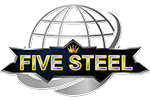Simply put, curtain wall system is regarded as the exterior facade or covering of a building that spans multiple floors. It blocks the weather from outside and protects occupants inside. Considering that a building facade is being aesthetically pleasing as well as playing a vital role in energy efficiency and linking exterior building design with interior one, it is very crucial to maintain the functional and aesthetic value of the curtain walls over time.
In most cases, one of the typical curtain wall durability problems is glazing failures over time. For example, glazing problems specific to curtain wall construction include visual obstruction from condensation or dirt, damage to opacifier films from material degradation, condensation and/or heat build-up, and IGU issues/laminated glass issues. Failure of internal gaskets and sealants from curtain wall movements (thermal, structural), prolonged exposure to water (good drainage features reduce this risk), heat/sun/UV degradation (age). Repairs (if feasible) require significant disassembly of curtain wall. If restoration of internal seals would not be physically possible or not economically feasible, installation of exterior surface wet sealing at all glazing and frame joints is often performed. In addition, there are a few other types of failure of exposed gaskets and sealants, including perimeter sealants, from curtain wall movements (thermal, structural), environmental degradation. And repairs require exterior access.
Aluminum curtain wall systems are very popular in the modern building construction today, because of the inherently corrosion resistant in many environments if anodized and properly sealed or painted with baked-on fluoropolymer paint. Aluminum frames are subject to deterioration of the coating and corrosion of aluminum in severe (industrial, coastal) environments and galvanic corrosion from contact with dissimilar metals. Frame corner seals constructed using sealant are prone to debonding from prolonged contact with moisture and from thermal, structural, and transportation movements.
Maintainability & Repairability
Curtain walls and perimeter sealants require the regular maintenance to maximize the service life of the curtain wall facades in applications. Perimeter sealants, properly designed and installed, have a typical service life of 10 to 15 years although breaches are likely from day one. Removal and replacement of perimeter sealants requires meticulous surface preparation and proper detailing. In some cases, the exposed glazing seals and gaskets require regular inspection and maintenance to minimize water penetration, limit exposure of frame seals, and protect insulating glass seals from wetting. Furthermore, aluminum frames are generally painted or anodized. And recoating with an air-dry fluoropolymer coating is possible but requires special surface preparation and is not as durable as the baked-on original coating. Anodized aluminum frames cannot be "re-anodized" in place, but can be cleaned and protected by proprietary clear coatings to improve appearance and durability.
Send your message to us:
Post time: Mar-30-2022




